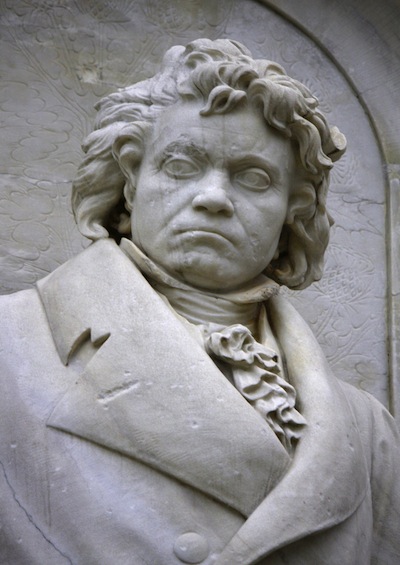9 Facts: Beethoven for the World
Beethoven’s music helped fundamentally reshape the way we experience music.
October 19, 2014

1. The first commercial 33-1/3 r.p.m. vinyl LP, released in 1931 by RCA Victor, contained a recording of Beethoven’s Fifth Symphony.
2. The duration of Sony’s first-generation compact disk was fixed at 75 minutes in order to contain an entire rendition of Beethoven’s Ninth Symphony.
3. During the 1848 and 1849 revolutions in Europe, performances of Beethoven’s symphonies were associated with the longing for liberty.
4. During World War II, the opening notes of his Fifth Symphony were associated with the short-short-short-long Morse code for the letter “V,” as in “V for Victory.”
5. On December 24, 1989, just weeks after the Berlin Wall fell, Leonard Bernstein conducted the Ninth Symphony in West Berlin.
6. Bernstein conducted the same work the following day in East Berlin.
7. After Beethoven, it became increasingly common for concert programs to feature works by dead composers –mostly works by Beethoven himself and the composers he influenced.
8. In the German city of Leipzig, only 11% of the works performed in 1782, when Beethoven was 12 years old, were written by dead composers.
9. By 1870, about four decades after Beethoven’s death, 76% of the works featured in Leipzig’s concert programs were by dead composers.
Source: Deus Ex Musica by Alex Ross (New Yorker, October 20, 2014).
Takeaways
The first commercial 33-1/3 r.p.m. vinyl LP contained a recording of Beethoven’s Fifth Symphony.
The opening notes of Beethoven's Fifth Symphony were associated with the short-short-short-long Morse code for the letter V for Victory during WWII
After Beethoven, it became increasingly common for concert programs to feature works by dead composers.
